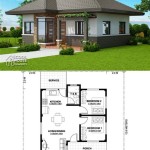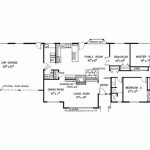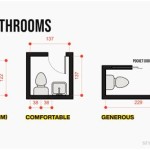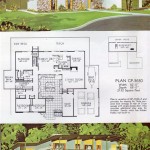```html
How To Draw a Floor Plan of an Existing House
Creating a floor plan of an existing house is a valuable skill for homeowners, interior designers, contractors, and real estate professionals. It allows for accurate space planning, facilitates renovation projects, aids in furniture arrangement, and provides a visual representation for documentation and communication. This article provides a comprehensive guide on how to draw a floor plan of an existing house, emphasizing accuracy and clarity in the process.
Gathering Essential Tools and Materials
Before commencing the floor plan creation, assembling the necessary tools and materials is crucial. This ensures a smooth and efficient workflow and minimizes interruptions during the measuring and drawing phases. The following items are essential:
- Measuring Tape: A long measuring tape (preferably 25 feet or longer) is indispensable for accurately measuring distances within the house. Laser measuring devices can also be used for faster and potentially more accurate measurements, especially for longer distances and in hard-to-reach areas.
- Graph Paper: Graph paper provides a pre-defined grid, facilitating the accurate scaling of the floor plan. A common scale is 1/4 inch equals 1 foot, meaning that every quarter-inch square on the graph paper represents one foot in the actual house.
- Pencils and Erasers: Use a sharp pencil (e.g., a mechanical pencil) for precise lines and measurements. A good quality eraser is necessary for correcting errors without damaging the paper.
- Notebook or Clipboard: A notebook or clipboard provides a convenient surface for taking notes and sketching preliminary layouts. It also allows for easy organization of measurements and observations.
- Level: A level is helpful for ensuring that doors and windows are accurately represented.
- Camera or Smartphone: Taking photographs of each room, including details such as window and door placements, electrical outlets, and built-in features, can be invaluable for reference during the drawing process.
The Step-by-Step Measurement Process
Accurate measurements are the foundation of a reliable floor plan. The following steps outline the process of measuring an existing house to create a floor plan:
- Sketch a Rough Layout: Before taking detailed measurements, sketch a rough layout of the entire house on your notebook. This layout should include the basic shape of the house, the location of exterior walls, and the approximate positions of interior walls, doors, and windows. This initial sketch serves as a roadmap for your measurement process.
- Measure Exterior Walls: Begin by measuring the exterior walls of the house. Start at one corner and measure the length of each wall, noting the location of windows, doors, and any other architectural features. Measure walls twice to ensure accuracy. Record all measurements clearly in your notebook. Pay attention to any irregularities in the wall, such as offsets or angles.
- Measure Interior Walls: Once the exterior walls are measured, proceed to measure the interior walls. Start with the main dividing walls and then move on to the smaller partitions. Measure the length of each wall and note the location of doors, windows, and any built-in features such as fireplaces or closets.
- Measure Door and Window Openings: Accurately measure the width and height of all door and window openings. Also, measure the distance from the corner of the room to the edge of each opening. Note the direction in which doors swing. This information is crucial for accurate representation on the floor plan.
- Measure Ceiling Height: Measure the ceiling height in several locations throughout the house. This information is important for understanding the overall proportions of the space and for potential renovation projects. Note any variations in ceiling height, such as lowered ceilings in bathrooms or kitchens.
- Measure Fixed Elements: Measure the dimensions and locations of all fixed elements, such as fireplaces, built-in cabinets, appliances, and plumbing fixtures. These elements are critical to include on the floor plan for accurate space planning.
- Double-Check Measurements: After completing all measurements, double-check them to ensure accuracy. Discrepancies can lead to errors in the final floor plan. If possible, have another person verify the measurements with you.
Creating the Floor Plan on Graph Paper
With accurate measurements in hand, you can begin transferring them onto the graph paper. Follow these steps to create a detailed and accurate floor plan:
- Select a Scale: Choose an appropriate scale for your floor plan. A common scale is 1/4 inch equals 1 foot, but you may need to adjust the scale depending on the size of the house and the size of your graph paper. Ensure that the entire house can fit on the paper at the chosen scale.
- Draw Exterior Walls: Using your measurements and the selected scale, begin drawing the exterior walls of the house on the graph paper. Use a straightedge to ensure that the lines are straight and accurate. Pay close attention to the angles and offsets of the walls.
- Draw Interior Walls: Once the exterior walls are drawn, add the interior walls based on your measurements. Use the same scale and straightedge to ensure accuracy. Represent wall thickness appropriately (a single line often suffices).
- Add Doors and Windows: Draw the doors and windows in their correct locations, using the measurements you recorded. Indicate the direction in which doors swing using an arc. The arc should start at the hinge side of the door and extend in the direction of the swing.
- Draw Fixed Elements: Add all fixed elements, such as fireplaces, built-in cabinets, appliances, and plumbing fixtures, to the floor plan. Use accurate measurements to ensure that these elements are placed correctly.
- Label Rooms and Features: Label each room on the floor plan with its name (e.g., living room, kitchen, bedroom). Also, label any significant features, such as windows, doors, appliances, and built-in elements.
- Add Dimensions: Add dimensions to the floor plan to indicate the lengths of walls and the sizes of rooms. This information is essential for accurate space planning and for conveying the dimensions of the house to others. Dimensions should be clear and easy to read.
- Finalize the Drawing: Review the completed floor plan to ensure that all measurements and features are accurately represented. Make any necessary corrections and refine the drawing to improve clarity and readability. Consider using different line weights to distinguish between different elements of the floor plan (e.g., thicker lines for exterior walls).
Tips for Accuracy and Clarity
Creating an accurate and clear floor plan requires attention to detail and adherence to best practices. The following tips can help ensure the quality of your floor plan:
- Measure Carefully: Take the time to measure accurately and double-check your measurements. Small errors can accumulate and lead to significant discrepancies in the final floor plan.
- Use a Consistent Scale: Maintain a consistent scale throughout the drawing process. Switching scales mid-way can lead to confusion and inaccuracies.
- Use Clear Labeling: Label all rooms and features clearly and concisely. Use standard abbreviations where appropriate.
- Use Different Line Weights: Use different line weights to distinguish between different elements of the floor plan. Thicker lines can be used for exterior walls, while thinner lines can be used for interior walls and furniture.
- Be Consistent with Symbols: Use consistent symbols for doors, windows, and other features. This makes the floor plan easier to understand.
- Use Software for Digitizing (Optional): Once you have created a hand-drawn floor plan, consider digitizing it using computer-aided design (CAD) software or other floor planning tools. This allows you to create a professional-looking floor plan that can be easily edited and shared. Several user-friendly software options are available for both desktop and mobile devices.
By following these steps and tips, anyone can create an accurate and informative floor plan of an existing house. This valuable tool can be used for a variety of purposes, from space planning and renovation projects to real estate transactions and documentation.
```
Floor Plans Learn How To Design And Plan

House Plans How To Design Your Home Plan

How To Draw A Floor Plan Live Home 3d

House Plans How To Design Your Home Plan

Draw Floor Plans In Half The Time Cedreo

House Plans How To Design Your Home Plan

Floor Plan Design Tutorial

How To Draw A Floor Plan Live Home 3d

9 Ways To Find Floor Plans Of An Existing House Blueprints Archid

House Plans How To Design Your Home Plan
Related Posts








